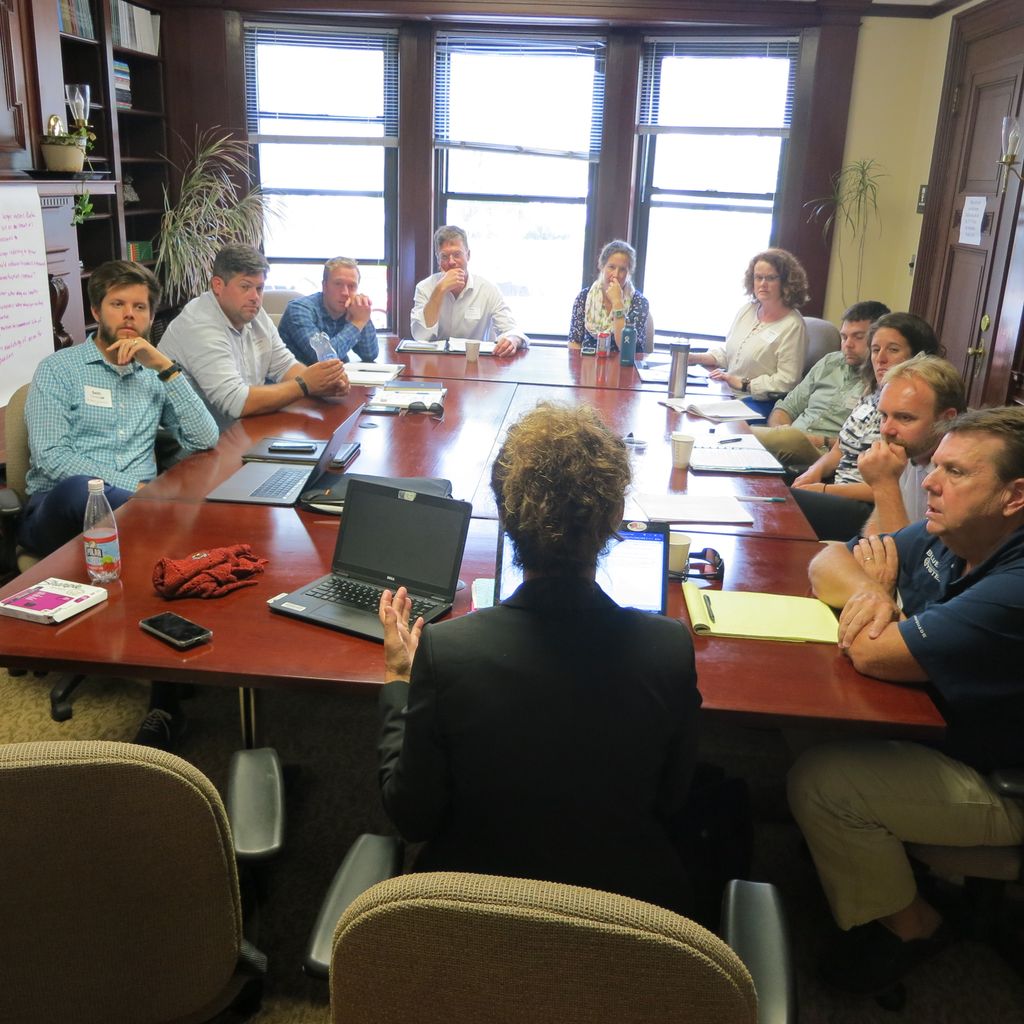Pardee Center Hosts Workshop on Denitrification Capacity of Oyster Habitats

Last week, the Frederick S. Pardee Center for the Study of the Longer-Range Future hosted a two-day workshop exploring the nitrogen removal capacity of oyster habitats via denitrification. The workshop, convened by Pardee Center Faculty Research Fellow Prof. Robinson W. (Wally) Fulweiler, brought together a group of about 30 experts to assess the current state of knowledge on denitrification associated with oyster aquaculture, and develop a path forward for including nitrogen removal capacity in future nutrient trading schemes.
 Oyster aquaculture has shown promise for improving water quality, specifically by filtering phytoplankton and detritus from the water column and depositing this material to the sediments below, thereby stimulating nitrogen removal in the sediments. By stimulating denitrification, oyster habitats provide a key ecosystem service that may help combat eutrophication and a variety of negative consequences, including decreased biodiversity. Thus, removing nitrogen from coastal ecosystems via oyster aquaculture is a relatively cheap way to complement traditional land-based nutrient management techniques. However, measuring and predicting oyster-stimulated denitrification remains difficult and studies have often focused on only one or two sites, limiting the ability to successfully design and advocate for policy.
Oyster aquaculture has shown promise for improving water quality, specifically by filtering phytoplankton and detritus from the water column and depositing this material to the sediments below, thereby stimulating nitrogen removal in the sediments. By stimulating denitrification, oyster habitats provide a key ecosystem service that may help combat eutrophication and a variety of negative consequences, including decreased biodiversity. Thus, removing nitrogen from coastal ecosystems via oyster aquaculture is a relatively cheap way to complement traditional land-based nutrient management techniques. However, measuring and predicting oyster-stimulated denitrification remains difficult and studies have often focused on only one or two sites, limiting the ability to successfully design and advocate for policy.
 The goals of this workshop were to synthesize the research and collaborate on best practice recommendations for quantifying oyster-mediated denitrification, identifying opportunities for incorporating denitrification in nutrient trading schemes, and improving communication between stakeholders. The first day of the workshop featured talks by invited speakers from Boston University, the Virginia Institute of Marine Science, the University of Maryland, U.S. EPA, NOAA, and the Oyster Recovery Partnership. The remainder of the time was focused on advancing the goals of the workshop in three working groups. Ultimately, each of the working groups intends to publish a paper in a leading academic journal to collectively inform the future of coastal water quality management and nutrient trading policy.
The goals of this workshop were to synthesize the research and collaborate on best practice recommendations for quantifying oyster-mediated denitrification, identifying opportunities for incorporating denitrification in nutrient trading schemes, and improving communication between stakeholders. The first day of the workshop featured talks by invited speakers from Boston University, the Virginia Institute of Marine Science, the University of Maryland, U.S. EPA, NOAA, and the Oyster Recovery Partnership. The remainder of the time was focused on advancing the goals of the workshop in three working groups. Ultimately, each of the working groups intends to publish a paper in a leading academic journal to collectively inform the future of coastal water quality management and nutrient trading policy.
Learn more about Prof. Fulweiler’s lab here.